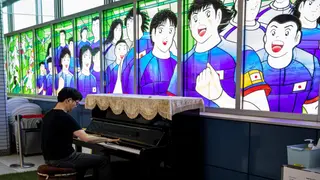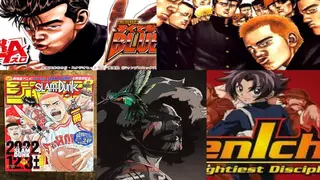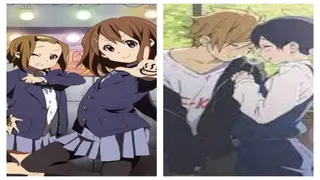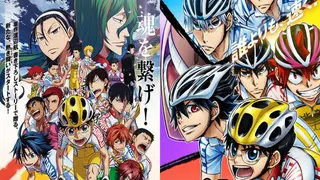The 15 best football anime and manga in the world right now
Football
Karate is one of the oldest forms of martial arts originating from Okinawa, Japan. The style has evolved into a more modern discipline with more techniques incorporated. How many karate styles are there?

All karate styles have their peculiar characteristics, teachings and training methods. Why are there different styles of karate? The styles developed due to varying approaches to learning and teaching.
How many different styles of karate are there? There are more than 75 karate styles. However, there are four main styles. Ten more Japanese karate styles are used. The -Ryu suffix in the karate styles names stands for class or school and means a particular way of doing things.

A kata is a Japanese word for form, which is important in karate. The three pillars of martial arts are kihon, kata and kumite, whereby kihon is the basics, and Kumite involves sparring. Here is the karate styles list:
The 15 best football anime and manga in the world right now
Football
It is one of the four primary techniques that originated from the main islands of Japan and was influenced by Okinawan Martial arts. The method was mainly influenced by Shōrin-ryū and Shōrei-ryū. The beginner stances are deeper, while the more advanced ones are longer, as 70% of the techniques are considered to be hard.
This is one of the four basic methods originating from the Okinawa island in Japan. The Tomari-te group, the Shindō Yōshin school of jujutsu and the Shōtōkan method of karate influenced the type. It focuses more on soft techniques but incorporates some hard techniques. The Wadō-ryū has 15 kata and is mainly made of natural stances.
As the third primary method, it also originated from Japan in 1934 by Kenwa Mabuni. It is more prevalent in West Japan and was influenced by the Okinawan styles. The technique incorporates short, low stances and has over 94 kata, which makes it the type with the most kata.
The 15 best basketball anime you need to watch at least once in your life
NBA

This is the last of the four main styles, originating from the Okinawan island. It is the method used in “The Karate Kid” that Mr Miyagi teaches Daniel. Gōjū-ryū was influenced by the Chinese martial art known as Fujian White Crane with bits of Kung Fu.
Its hard and soft components are evenly mixed as from its name. The method used deep and natural movement while having 12 kata. Its movements are circular compared to the Shōtōkan.
The method mixes hard and soft techniques focusing more on the softer techniques. It is a mixture of Shōrin-ryū and Okinawan styles, such as Shōrei-ryū, but its primary influence was the Naha-te group. The type has 15 kata.

The style is a combination of the Japanese Karate styles of Shōtōkan and Gōjū-ryū. Beginners use deeper stances when learning it, but advanced artists use natural ones. It has one of the most kata among karate styles having 46.
The top 15 best boxing anime and manga to watch right now
Boxing
The style originated in Okinawa, combining three different types that are the Gōjū-ryū, Shōrin-ryū and Kobudō. It mainly emphasises hard and fast techniques, although some are soft. It has 15 kata and includes the weapon kata.
It incorporates hard techniques with natural stances. Kyokushin originated from Japan, combining Shōtōkan and Gōjū-ryū. The method has 23 kata with an extra eight ura kata, which involves spinning when moving.

This technique has 44 kata. 60% of its techniques are hard with natural stances. The Japanese style is a combination of Gōjū-ryū and Sh!tō-ryū.
It was mainly influenced y the Shuri-te group with influences from Naha-te and Tomari-te. Shindō jinen-ryū primarily encompasses deep and natural stances and has more than 60 kata.
It combines Shuri-te and Tomari-te with some Chinese martial arts influence. The method uses fast and hard techniques, although soft ones can also be used. Shōrin-ryū has 21 kata with mainly natural stances.
The 15 best tennis anime and manga to watch right now
Tennis

Shuri-ryū was founded in the Okinawa islands, influenced by the Shuri-te group and Chinese martial arts called Xing Yi Quan. It has 15 kata and incorporates both deep and natural stances.
The Onkinawa technique combines both the Naha-te group and the Pangai-noon styles. Natural techniques are preferred while evenly putting soft and hard types into use. The 8-kata style is natural and has the least kata of all.
The Japanese and Okinawa styles derive from the Chitō-ryū method and mainly use hard techniques in 60% of their implementation. It uses deeper stances for beginners and more natural stances for advanced karatekas. Yōshūkai has 18 kata.
Korean karate is known as Tae Kwon Do. It has four different methods, which can also be known as organisations. The styles are the Traditional, World Tae kwon do, ITF, and ATA styles. It has some of the best karate styles. It is also represented as a sport at the Olympics.
Ranked! The 10 best cycling anime and manga to watch right now
Other Sports

The method can be classified as a competition and a separate form of martial arts. In competition, the most popular are American, Gloved, Bogu Kumite, Point Karate, and Karate Combat. As a martial art, the most popular types are Kyokushin, Shidokan, Seidokaikan, and Ashihara karate.
There are over 75 different karate styles that emanate from all over the world. The martial art has evolved into various forms, each with its techniques and kata. One can also participate in the art as a sport.
READ ALSO: Which is the most popular sport in China? Chinese sports culture explained
Sports Brief published a list of the most popular sports in China. China is one of the most populated countries in the world and one of the most technologically advanced. They have participated in nearly all games at the Olympics before. What are the most popular games in China? Check out the link above to learn more about Chinese sports.